
Rosa Louise McCauley Parks was an American activist in the civil rights movement, best known for her pivotal role in the Montgomery bus boycott. The United States Congress has honored her as "the first lady of civil rights" and "the mother of the freedom movement".

Saint John is a seaport city located on the Bay of Fundy in the province of New Brunswick, Canada. It is Canada's oldest incorporated city, established by royal charter on May 18, 1785, during the reign of George III. The port is Canada's third-largest by tonnage with a cargo base that includes dry and liquid bulk, break bulk, containers, and cruise. The city has a strong industrial base, including oil refining and manufacturing, matched with finance and tourism sectors and research institutions such as the New Brunswick Museum and the University of New Brunswick. Saint John was the most populous in New Brunswick until the 2016 census, when it was overtaken by Moncton. It is currently the second-largest city in the province, with a population of 69,895 over an area of 315.59 km2 (121.85 sq mi).
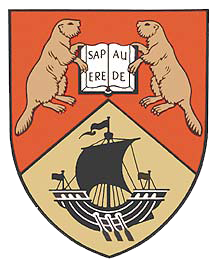
The University of New Brunswick (UNB) is a public university with two primary campuses in Fredericton and Saint John, New Brunswick. It is the oldest English-language university in Canada, and among the oldest public universities in North America. UNB was founded by a group of seven Loyalists who left the United States after the American Revolution.

The civil rights movement was a social movement and campaign in the United States from 1954 to 1968 that aimed to abolish legalized racial segregation, discrimination, and disenfranchisement in the country, which was most commonly employed against African Americans. The movement had origins in the Reconstruction era during the late 19th century, and had modern roots in the 1940s. After years of direct actions and grassroots protests, the movement made its largest legislative and judicial gains during the 1960s. The movement's major nonviolent resistance and civil disobedience campaigns eventually secured new protections in federal law for the civil rights of all Americans.
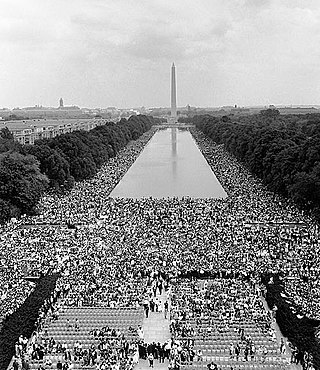
The March on Washington for Jobs and Freedom, also known as simply the March on Washington or the Great March on Washington, was held in Washington, D.C., on August 28, 1963. The purpose of the march was to advocate for the civil and economic rights of African Americans. At the march, final speaker Dr. Martin Luther King Jr., standing in front of the Lincoln Memorial, delivered his historic "I Have a Dream" speech in which he called for an end to racism and racial segregation.
The NAACP Image Awards is an annual awards ceremony presented by the U.S.-based National Association for the Advancement of Colored People (NAACP) to honor outstanding performances in film, television, theatre, music, and literature. The over 40 categories of the Image Awards are voted on by the NAACP members. Honorary awards have also been included, such as the President's Award, the Chairman's Award, the Entertainer of the Year, the Activist of the Year, and the Hall of Fame Award. Beyoncé is the All-Time leading winner with 25 wins as a solo artist.
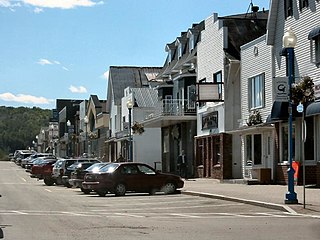
Grand Falls is a town in northwestern New Brunswick, Canada, on the Saint John River. Its name comes from a waterfall created by a series of rock ledges over which the river drops 23 metres (75 ft).

Horace Julian Bond was an American social activist, leader of the civil rights movement, politician, professor, and writer. While he was a student at Morehouse College in Atlanta, Georgia, during the early 1960s, he helped establish the Student Nonviolent Coordinating Committee (SNCC). In 1971, he co-founded the Southern Poverty Law Center in Montgomery, Alabama, and served as its first president for nearly a decade.

Roy Ottoway Wilkins was an American civil rights leader from the 1930s to the 1970s. Wilkins' most notable role was his leadership of the National Association for the Advancement of Colored People (NAACP), in which he held the title of Executive Secretary from 1955 to 1963 and Executive Director from 1964 to 1977. Wilkins was a central figure in many notable marches of the civil rights movement and made contributions to African-American literature. He controversially advocated for African Americans to join the military.
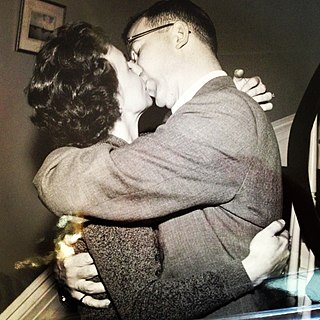
Eric Lawrence Teed, was a Canadian lawyer, author, history, civil rights advocate and politician.
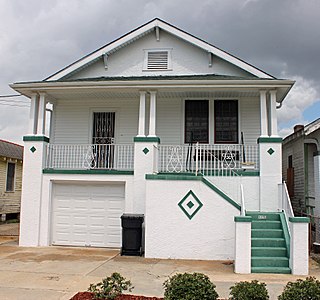
Alexander Pierre "A. P." Tureaud Sr. was an African-American attorney who headed the legal team for the New Orleans chapter of the NAACP during the Civil Rights Movement. With the assistance of Thurgood Marshall and Robert Carter from the NAACP Legal Defense and Educational Fund, A. P. Tureaud filed the lawsuit that successfully ended the system of Jim Crow segregation in New Orleans. That case paved the way for integrating the first two elementary schools in the Deep South.

Five on the Black Hand Side is a 1973 African-American comedy film based on the 1969 play of the same name by Charlie L. Russell. It was shot in Downtown Los Angeles, California. Leonard Jackson appeared as John Henry Brooks. He was cast in Steven Spielberg's The Color Purple fifteen years later.

Clara Shepard Luper was a civic leader, schoolteacher, and pioneering leader in the American Civil Rights Movement. She is best known for her leadership role in the 1958 Oklahoma City sit-in movement, as she, her young son and daughter, and numerous young members of the NAACP Youth Council successfully conducted carefully planned nonviolent sit-in protests of downtown drugstore lunch-counters, which overturned their policies of segregation. The success of this sit-in would result in Luper becoming a leader of various sit-ins throughout Oklahoma City between 1958 and 1964. The Clara Luper Corridor is a streetscape and civic beautification project from the Oklahoma Capitol area east to northeast Oklahoma City. In 1972, Clara Luper was an Oklahoma candidate for election to the United States Senate. When asked by the press if she, a black woman, could represent white people, she responded: “Of course, I can represent white people, black people, red people, yellow people, brown people, and polka dot people. You see, I have lived long enough to know that people are people.”

The National Association for the Advancement of Colored People (NAACP) is an American civil rights organization formed in 1909 as an interracial endeavor to advance justice for African Americans by a group including W. E. B. Du Bois, Mary White Ovington, Moorfield Storey, Ida B. Wells, Lillian Wald, and Henry Moskowitz. Over the years, leaders of the organization have included Thurgood Marshall and Roy Wilkins.
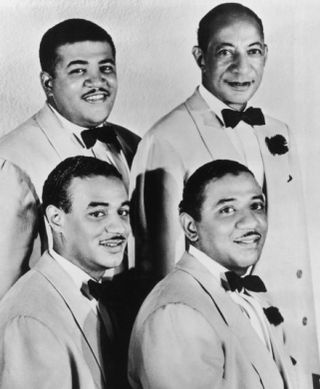
The Mills Brothers, sometimes billed The Four Mills Brothers and originally known as Four Boys and a Guitar, were an American jazz and traditional pop vocal quartet who made more than 2,000 recordings that sold more than 50 million copies and garnered at least three dozen gold records.

William J. Barber II is an American Protestant minister, social activist, professor in the Practice of Public Theology and Public Policy and founding director of the Center for Public Theology & Public Policy at Yale Divinity School. He is the president and senior lecturer at Repairers of the Breach and co-chair of the Poor People's Campaign: A National Call for a Moral Revival. He also serves as a member of the national board of the National Association for the Advancement of Colored People (NAACP) and is the chair of its legislative political action committee. From 2006 to 2017, Barber served as president of the NAACP's North Carolina state chapter, the largest in the Southern United States and the second-largest in the United States. He pastored Greenleaf Christian Church in Goldsboro, North Carolina, from 1993 to 2023.
This is a timeline of the civil rights movement in the United States, a nonviolent mid-20th century freedom movement to gain legal equality and the enforcement of constitutional rights for people of color. The goals of the movement included securing equal protection under the law, ending legally institutionalized racial discrimination, and gaining equal access to public facilities, education reform, fair housing, and the ability to vote.
The Chester school protests were a series of demonstrations that occurred from November 1963 through April 1964 in Chester, Pennsylvania. The demonstrations aimed to end the de facto segregation of Chester public schools that persisted after the 1954 Supreme Court case Brown v. The Board of Education of Topeka. The racial unrest and civil rights protests were led by Stanley Branche of the Committee for Freedom Now (CFFN) and George Raymond of the National Association for the Advancement of Colored Persons (NAACP).
The Committee for Freedom Now (CFFN) was an American civil rights organization in Chester, Pennsylvania, that worked to end de facto segregation and improve the conditions at predominantly black schools in Chester. CFFN was founded in 1963 by Stanley Branche along with the Swarthmore College chapter of Students for a Democratic Society and Chester parents. From November 1963 to April 1964, CFFN and the Chester chapter of the NAACP, led by George Raymond, initiated the Chester school protests which made Chester a key battleground in the civil rights movement.

Black Canadians in New Brunswick refers to Black Canadians from the province of New Brunswick, notably of those whose ancestors, much like those of Black Nova Scotians, originated from the Colonial United States as slaves or freemen and arrived in New Brunswick during the 18th and early 19th centuries. As of the 2021 Canadian census, 12,155 Black people live in New Brunswick, making them the largest visible minority group in the province. The first recorded Black person in present-day New Brunswick was a Black man from New England who was forcibly taken during a French raid in the late 17th century.
















